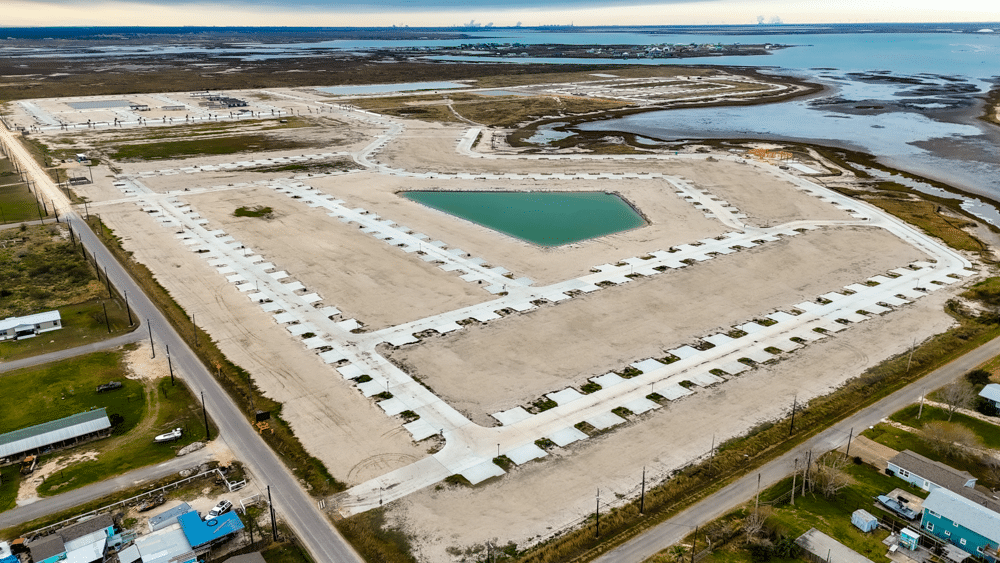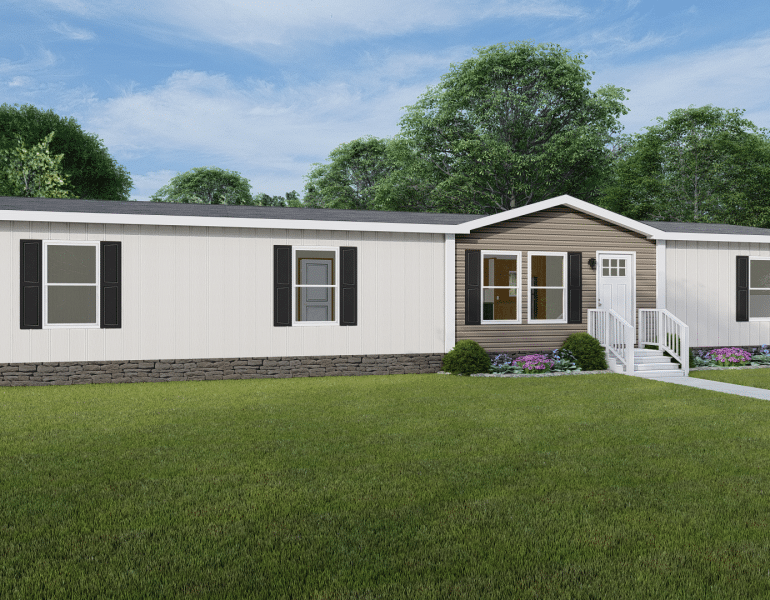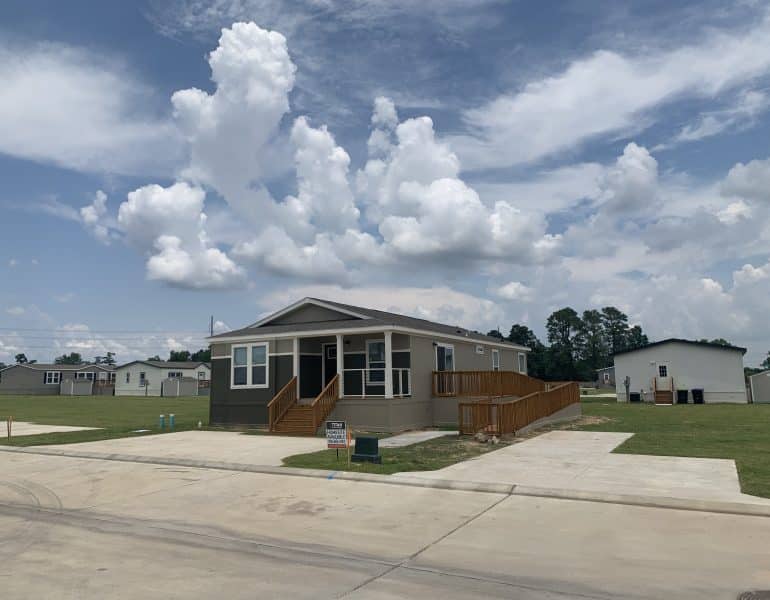
What Is a Manufactured Home?
Manufactured homes are built efficiently in climate-controlled factories where everything is constructed according to federal building codes determined by HUD — otherwise known as the U.S. Department of Housing and Urban Development. These regulations protect every home’s safety, quality, durability, and affordability, and they require them to be placed on a non-removable chassis. The homes themselves can have many of the qualities and features we’re used to seeing on traditional, single-family homes, even including garages and decks.
Then, when the home is fully built on its solid-steel frame, it’s shipped directly to the chosen location. That is whatever land you’ve purchased or leased as your new address! Unlike an RV or camper, manufactured houses have to be secured to a foundation, which can be permanent or non-permanent (like concrete blocks or other tie-downs).
Factory efficiency and streamlined delivery help make these homes more affordable than other, more traditional options. According to the US Census Bureau, the average cost of a new manufactured home in 2022 was $127,300. The average cost of a site-built home was $540,000. That’s a major savings for over 20 million Americans who choose manufactured housing.
Plus, when you’re looking into buying a manufactured house, you may also get the chance to move into a manufactured housing community. On top of offering convenient utility hook-ups and move-in ready homes, these neighborhoods can also provide fun community atmospheres with resort-style amenities, like pools, playgrounds, and fitness centers.
Is a Manufactured Home Different From a Site-Built Home?
Unlike the controlled factory setting of manufactured housing, traditional site-built homes are built directly on their permanent foundation — literally from the ground up — at the selected address. This process sometimes results in long exposure to the elements, but it can also provide distinct bonus spaces, like basements and crawl spaces, which you won’t find in manufactured housing.
It’s important to note, while the same materials are used to build both types of housing, manufactured homes undergo strict inspections due to HUD standards. Among other requirements, these regulate the minimum square footage for each bedroom, the height of the ceiling, and safety requirements that improve resident protections, like fire safety and energy efficiency.
Alternatively, site-built homes are built according to International Residential Code (IRC) standards, which is a model code that can be amended by local and state governments. That means these unmoveable houses are not regulated at the federal level.
What Is a Manufactured vs. Mobile Home?
It’s easy to mix up manufactured and mobile homes because one is simply a more modern, regulated, and secure version of the other. While both are factory-built homes, America’s old mobile homes were mass-produced due to sudden high demand after World War II — with no uniform quality or safety standards.
Then, on June 15, 1967, HUD implemented their new federal standards for manufactured housing. So, any factory-built home built after 1967 is referred to as a manufactured home, and anything built before 1967 is called a mobile home. The distinction is largely age, resident safety, and standard of living.
What Is a Manufactured vs. Modular Home?
A modular home is constructed in a factory in pieces and then assembled at the home site. This seemingly makes it a middle-ground between manufactured and site-built homes. However, like their site-built counterparts, modular homes are regulated by local and state governments and not by HUD at the federal level.
Want to Learn More About Buying a Manufactured Home?
Thanks to diverse designs and layouts with tried-and-true standards applied across the United States, manufactured housing can be an excellent choice for families of all kinds.
And now that you understand exactly what a manufactured home is, we recommend learning about financing options and manufactured housing communities like ours. Your next home could be ready

